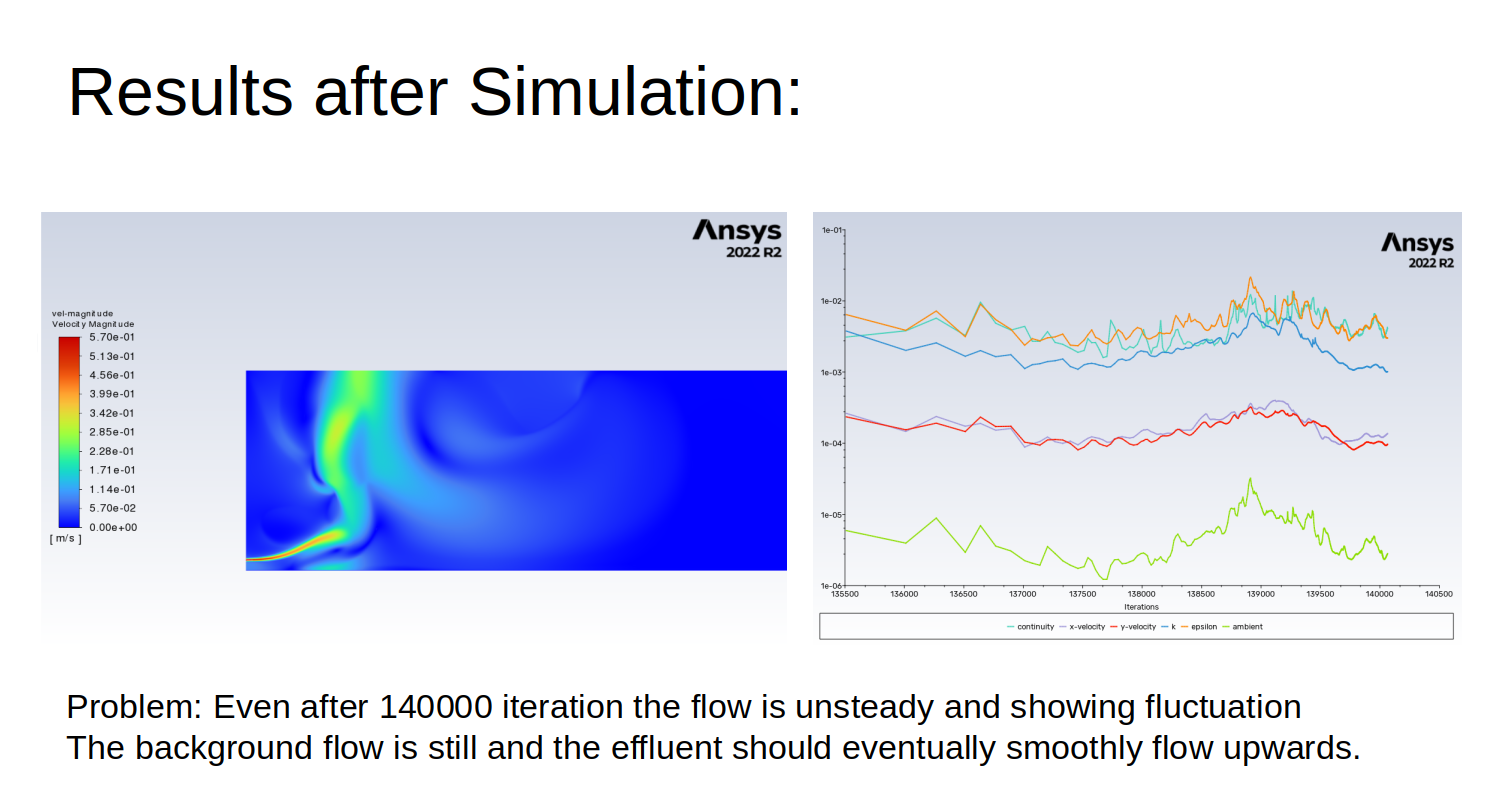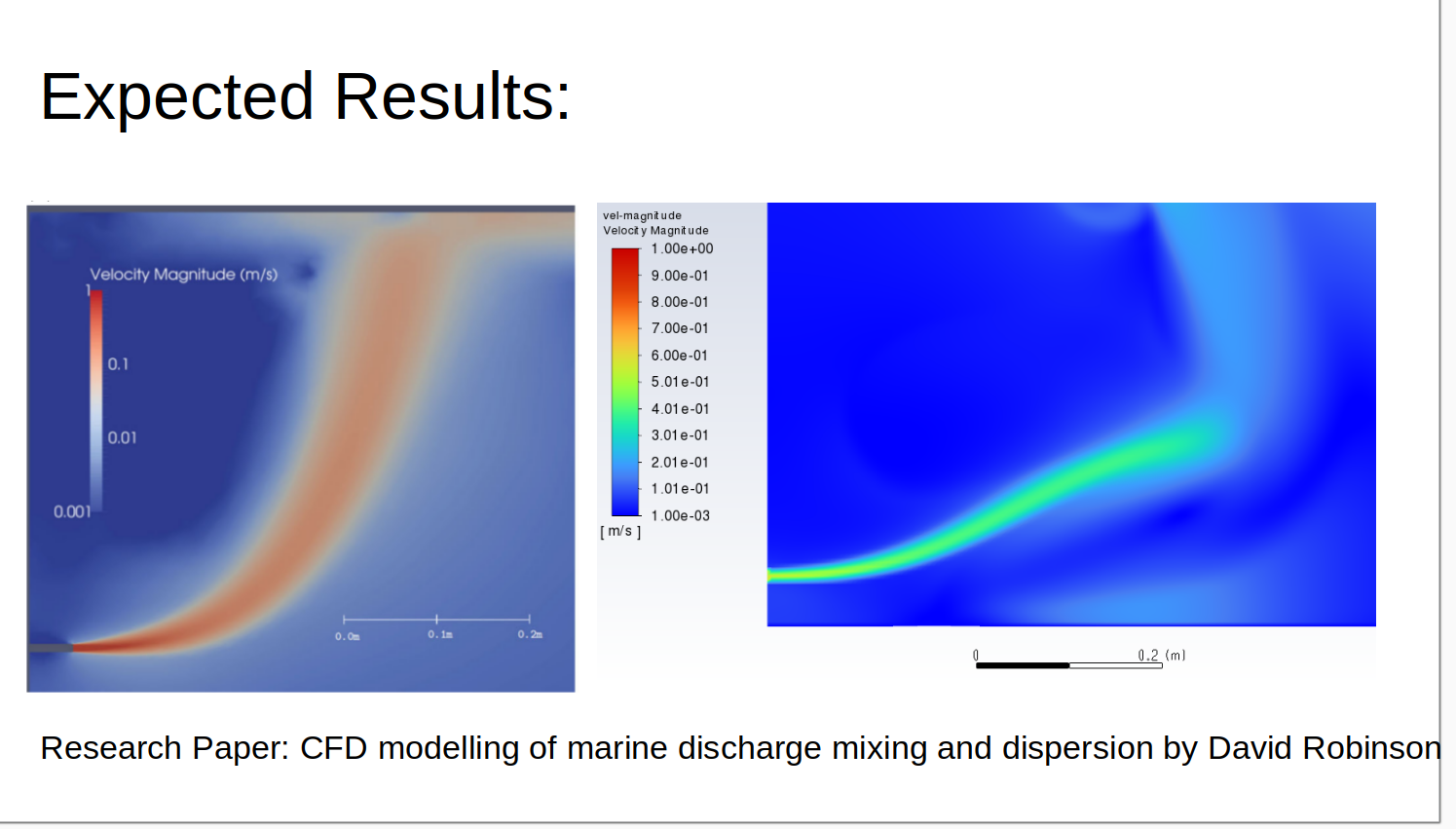TAGGED: fluent, species-diffusion
-
-
July 8, 2025 at 4:00 am
anantsinghal
SubscriberProblem Description:
- This simulation is for marine discharge mixing through an horizontal jet. The simulation is considered as turbulent diffusion.
- The model domain for the simulation is 4m X 1m X 1m, with the outlet nozzle placed at the centre of the rear wall, protruding 0.05m into the domain.
- The inlet velocity is 0.57m/s and the diameter of the inlet pipe is 9.4mm.
- The density of the ambient is 1039.4 Kg/m^3 and the density of the effluent is 1000.8 Kg/m^3
Boundary Conditions:
- This simulation is set up in Ansys 2022 R2
- Made a 2D model across the centre of the the domain with mesh of 5mm.
- The bottom edge is set as wall, the other three edges are set as outlet and the length of 9.4mm edge at the left edge is set as inlet.
- Set the physics as 2D planar model with gravitational acceleration in negative y direction.
- Used realizable k-epsilon model and species transport.
- The material property of the mixture of effluent and ambient is made with density as volume-weighted-mixing-law and mass diffusivity as kinetic theory.
- The inlet is set as velocity-inlet, with velocity 0.57m/s in x-direction and species mass fraction of ambient as 0.
- The outlet is set as pressure-outlet, with default settings and species mass fraction of ambient as 1.
- In operating conditions pressure is set as 101325 Pa.
- In solution methods, pressure velocity coupling as simple scheme and change turbulent kinetic energy and dissipation rate as second order upwind.
- Solution initialization is standard initialization and computed from outlet with X velocity as 0.57m/s and ambient as 1.
-
July 8, 2025 at 11:18 am
Rob
Forum ModeratorMesh will play a part, but the paper results look to be far more buoyant than in your results. If you plot species and density how do the results compare with the paper?
-
July 9, 2025 at 7:44 am
anantsinghal
SubscriberI will run simulations with refined mesh for achieving grid independence. The paper dows not give any other conours. It plots graphs of trajectory and species dilution. We are generating graphs to compare those but our trajectory is very much deviated from what is reported, and the flow patterns shown in our simulation are not going away after large number of iterations.
Any suggestions on how long these simulations should run for getting stable results?
-
July 9, 2025 at 8:56 am
Rob
Forum ModeratorFree jets may never become stable depending on other factors: read up on the Coanda Effect for one of the reasons. How diffusive is your mixture?
-
- You must be logged in to reply to this topic.



-
3572
-
1118
-
1063
-
1050
-
952

© 2025 Copyright ANSYS, Inc. All rights reserved.









